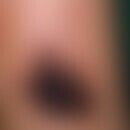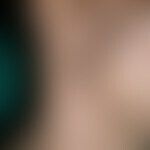Synonym(s)
DefinitionThis section has been translated automatically.
Chronic lichen planus in light-exposed skin zones, in dark-skinned children and young adults living in tropical or subtropical zones.
Occurrence/EpidemiologyThis section has been translated automatically.
The incidence of actinic lichen planus has been estimated at 1 case per million population per year (Bouassida S et al. 1998).
Worldwide occurrence, preferentially in Middle Eastern countries, further in India and in African countries (e.g. Ethiopia).
Isolated cases in Japan and in Central Europe.
You might also be interested in
EtiopathogenesisThis section has been translated automatically.
Unexplained.
Genetic factor: Etiopathonetically noteworthy are reports of a familial occurrence of lichen ruber actinicus (Gökşin Ş et al. 2022).
Immunologic factor (associated occurrence with an immune disease): co-occurrence with vitiligo has been reported (Baghestani S e al. 2013).
ManifestationThis section has been translated automatically.
Dark-skinned people (skin type IV) preferred.
Children are frequently affected. Rarely adults. In larger collectives, patients were found between 7 and 47 years of age (average 17 years).
w:m=2.5:1
Preferential occurrence in spring and summer.
LocalizationThis section has been translated automatically.
Light-exposed areas (91%), especially in the area of the forehead, back of the hand, also on the red of the lips of the lower lip.
ClinicThis section has been translated automatically.
Itchy exanthema consisting of red-brown, flat papules that may confluence to form mostly anular, marginal, only mildly pruritic plaques up to 5.0 cm in size.
Anular lichen planus actinicus is the most common, accounting for >80%.
In the melasma form, non-anular, two-dimensional, brown-black spots or patches are found (also dyschromic form).
HistologyThis section has been translated automatically.
Picture of the classical Lichen planus (see there).
General therapyThis section has been translated automatically.
External therapyThis section has been translated automatically.
Internal therapyThis section has been translated automatically.
According to the Lichen planus. A successful therapy with antimalarial drugs has been reported several times.
Progression/forecastThis section has been translated automatically.
Chronic course is the rule. Worsening after sun exposure. When healed, the foci resemble melasma.
LiteratureThis section has been translated automatically.
- Aloi F et al (1997) Actinic lichen planus simulating melasma. Dermatology 195: 69-70
- Baghestani S e al. (2013) Familial colocalization of lichen planus and vitiligo on sun exposed areas. Ann Dermatol 25:223-225.
- Bouassida S et al (1998) Actinic lichen planus: 32 cases. Ann Dermatol Venereol 125: 408-413.
- Collgros H et al (2014) Childhood actinic lichen planus: four cases report in Caucasian Spanish children and review of the literature. J Eur Acad Dermatol Venereol doi: 10.1111/jdv.12917
- Dammak A et AL: (2007) Childhood actinic lichen planus (6 cases)]. Arch Pediatr 15:111-114
- Dekio I et al (2010) Actinic lichen planus in a Japanese man: first case in the East Asian population. Photodermatol Photoimmunol Photomed 26:333-335.
- Gökşin Ş et al (2022) Familial actinic lichen planus: three cases from the Same Family. Ann Dermatol 34: 370-373.
- Peretz E et al (1999) Annular plaque on the face. Actinic lichen planus ALP). Arch Dermatol 135: 1543-1546.
- Ramírez P et al (2012) Childhood actinic lichen planus: successful treatment with antimalarials. Australas J Dermatol53:e10-13
- Skowron F et al (2002) Erythematosus actinic lichen planus: a new clinical form associated with orally erosive lichen planus and chronic active hepatitis B. Br J Dermatol 147: 1032-1034.
Incoming links (5)
Actinic lichen ruber planus; Lichen planus anularis; Lichen planus subtropicus; Lichen planus tropicalis; Lichen tropicalis;Outgoing links (5)
Glucocorticosteroids; Lichen planus classic type; Light protection; Melasma; Prednicarbate;Disclaimer
Please ask your physician for a reliable diagnosis. This website is only meant as a reference.












